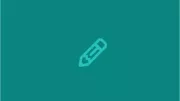Recent Blogs
Blog
Does Branchless Banking Reach Poor People? The Evidence from Mali
This is the third posting in a mini-series in which we present new evidence from three countries on whether branchless banking is reaching poor people. This post looks at Orange Money in Mali. Previous posts looked at India and Pakistan.Blog
A Little Willpower Can Have a Big Impact
When Women’s World Banking (WWB) started our savings and financial education program for girls in 2008, we were excited about the potential to provide a sustainable, scalable way to encourage girls to build assets and become better money managers.Blog
Why Distributing Mobile Money Is Harder than Airtime for MNOs
It’s often said mobile network operators (MNOs) have the advantage over banks in creating agent networks from their dense carpet of prepaid airtime sellers. But is this true?Blog
Does Branchless Banking Reach Poor People? The Evidence from India
This is the second post in a mini-series in which we present new evidence from three countries on whether branchless banking is reaching poor people. This post looks at banking customers acquired and serviced by Eko as a Business Correspondent of banks in India. The first post looked at EasyPaisa customers in Pakistan.Blog
Ghana: Aiming for Interoperability in Branchless Banking
With 6 live branchless banking deployments involving 12 banks, 3 Mobile Network Operators, 2 start-ups and a government entity, the race is on in Ghana to reach the unbanked with branchless banking services.Blog
From Basel to Bujumbura: Why Deposit Insurance Matters
Broad access to safe and affordable small savings accounts promotes financial inclusion and helps households prepare for unexpected expenses and plan for a more secure financial future.Blog
Reaching the Poor and Very Poor with Appropriate Savings Services
More and more people understand that even the poorest save. But, reaching the poor and very poor does not happen automatically.Blog
Can Brazil’s Agents Provide a Wider Range of Services?
The prevailing wisdom about Brazil’s vast agent network (largest in the world, 4x that of Kenya and the Philippines combined!) is that it is used mainly for bill payments. This network appears to be a missed opportunity to also make credit, savings, and other products available to low-income people in an affordable way. Is this channel being underutilized for poor people?Blog
CGAP Releases Agent Management Training Package
In February 2011, CGAP released an Agent Management Toolkit based on 500 interviews with agents, agent network managers and financial institutions in Brazil (Banco do Brasil and Banco Postal), India (EKO and FINO), and Kenya (M-PESA). This post introduces an Agent Management Training Package to enable practitioners to train their service partners about key steps in building a robust agent network.Blog
Does Branchless Banking Reach Poor People? The Evidence from Pakistan
In this mini-series we explore new evidence from three countries on whether branchless banking is reaching poor people starting today with Pakistan.Blog
Al Amal, Winner of the Islamic Microfinance Challenge 2010
Al Amal provides various financial services and products (Islamic financing, savings, solidarity insurance, etc.) and is among a handful of microfinance institutions in the Arab World providing Islamic financial services.Blog
Postal Banks Have Potential to Open 1 Billion Savings Accounts
Toward the end of the 19th century, postal services began to contribute to the development of a savings culture in many of today’s industrialized countries. And they are playing a similar role in developing and emerging countries at the dawn of the 21st century.Blog
G2P Starts with Government to the Poorest in Fiji
Fiji’s government is now insisting that all communal land lease payments, mostly to rural communities, must move to electronic payment. Financial institutions, government ministries and Central Banks around the region have their eyes trained on Fiji, watching the latest evidence of viable financial inclusion efforts unfold in the Pacific.Blog
Tips on Mobile Money Product Design from Uganda
How much would you like to pay to save? Zero, most likely. In fact, you probably hate the fees your bank charges for the privilege of holding your funds and disbursing when you ask for them.Blog
Pakistan: Branchless Banking’s Business Model Laboratory
Over the past several months, we have taken a close look at the branchless banking industry in a few key countries. We have presented our learning from Brazil, Mexico and India over the last few weeks. Today we continue with our analysis of Pakistan and share this summary note on the branchless banking industry.Blog
Centre for Women Co-operative Development, Pakistan
Innovation at CWCD has led to a complete organizational transformation, where CWCD has let go of its conventional microfinance programs and dedicated itself completely towards Islamic Microfinance.Blog
Can Mobile Money Be “Free”?
CGAP wants the financially excluded to get access to mobile financial services. To suggest that MNOs make mobile money “free” may then come across as self-serving. On the contrary, making money in mobile money and making it “free” are compatible.Blog
Get Your Risk-free 30% APR Savings Account Here!
From a policy perspective, if we could find a way to help individuals use savings rather than debt to make large expenditures, many would have more money for food, festivities, investment and mitigating risks in the long run.Blog
Saving Up Is Hard to Do
The financial lives of the poor are dominated by the need to build usefully large sums of money for immediate expenditure.Blog

